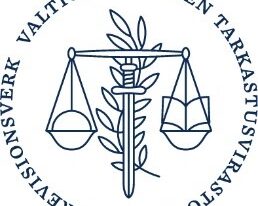Recruiting Heads of Supreme Audit Institutions

by David Goldsworthy, Head of International Relations and Technical Cooperation, UK National Audit Office
The INTOSAI México Declaration on Supreme Audit Institution (SAI) Independence established the principle that SAI heads and members of collegial institutions should be appointed by a process that ensures independence from the executive. Yet, little is written within the SAI community on what constitutes an appropriate process for recruiting and appointing new heads; what is considered reasonable to reassure citizens that these appointments are independent of the executive.
In many countries, the appointment process is some black box out of which emerges, at various times in a SAI’s history, a new auditor general or a new chamber president.
To some extent, this used to be the process in the United Kingdom (UK); however, in recent years, the UK has tried to be more transparent and follow what is believed to be a fairer process, resulting in the appointment of the most suitable candidate for the post.
The Comptroller and Auditor General (C&AG) recruitment in the UK is partly covered by law, partly by evolving practice. At its base, the process aims for independence and transparency resulting in the appointment of someone bearing integrity, leadership skills, a passion for reformation, and a background in professional accounting and auditing who can cultivate continued growth and transformation within the National Audit Office (NAO) that best meets the needs of parliament.
At the same time, the appointment process seeks to provide checks and balances that are a central feature of the British constitution. The C&AG is expected to seek advice from both the government and parliament when drafting the NAO “forward program”, despite the possession of independence and the ability to decide whether or not to accept that advice. Thus, it is essential that the successful candidate be seen as knowledgeable and credible by both parliament and government.
It is important to note that, contextually, in the UK, the C&AG is an independent officer of the House of Commons who is appointed for a fixed, ten-year term by Her Majesty the Queen upon an address to parliament by the prime minster and seconded by the chair of the Committee of Public Accounts (a senior figure from the leading opposition party). This is vital in ensuring that the appointee has the cross-sectional support of members of parliament and is not affiliated with any particular group.
To date, the recruiting process for the most recent C&AG has been the most transparent. A firm of recruitment consultants was appointed to administer the process. The company used corporate networks, online advertising and mainstream ads in newspapers to encourage suitable applicants. From the pool of applicants, the recruiting consultants produced a short list of those found most suitable for further consideration by a hiring panel.
The panel was chaired by the Public Accounts Committee (PAC) with the remaining selection committee incorporating the:
- Treasury Permanent Secretary, representing the interests of government;
- Outgoing C&AG, representing the interests of the NAO; and
- Chairman of the NAO Board, ensuring an independent scrutiny of the process.
The panel’s recommendation was accepted by the prime minister, who announced the appointment. At the same time, the PAC chairman issued a press release welcoming the prime minister’s approval of the appointed C&AG.
The PAC then convened a hearing to query the appointee on his experience and suitability for the post of C&AG, as well as his vision and plans for the NAO. This hearing played no part in the statutory process; however, the committee took into consideration that parliament would find such an inquiry informative.
The next formal step was for the prime minister to table a motion (supported by the PAC Chair) in the House of Commons, at which time he asked the Queen to officially appoint the C&AG. At this time, members of parliament (who had been party to the pre-appointment hearing) were able to offer opinions.
Once the decision was endorsed by parliament, the Queen made the formal appointment through “letters patent,” a type of legal instrument in the form of published written orders issued by a monarch, president or other head of state. These instruments generally grant an office, right, monopoly, title or status to a person or corporation.
This process, uniquely English, focuses on balancing the needs of government and parliament while maintaining independence. At the same time, it seeks to follow best principles for the recruitment of senior public figures. It is open, transparent, merit-based, competitive and, more importantly, in the political arena in which heads of SAIs operate, bi-partisan. While this approach may not work for all SAIs, there is interest to share knowledge and experience with other SAIs who have implemented processes that have achieved similar, or better, levels of independence, openness and transparency.





